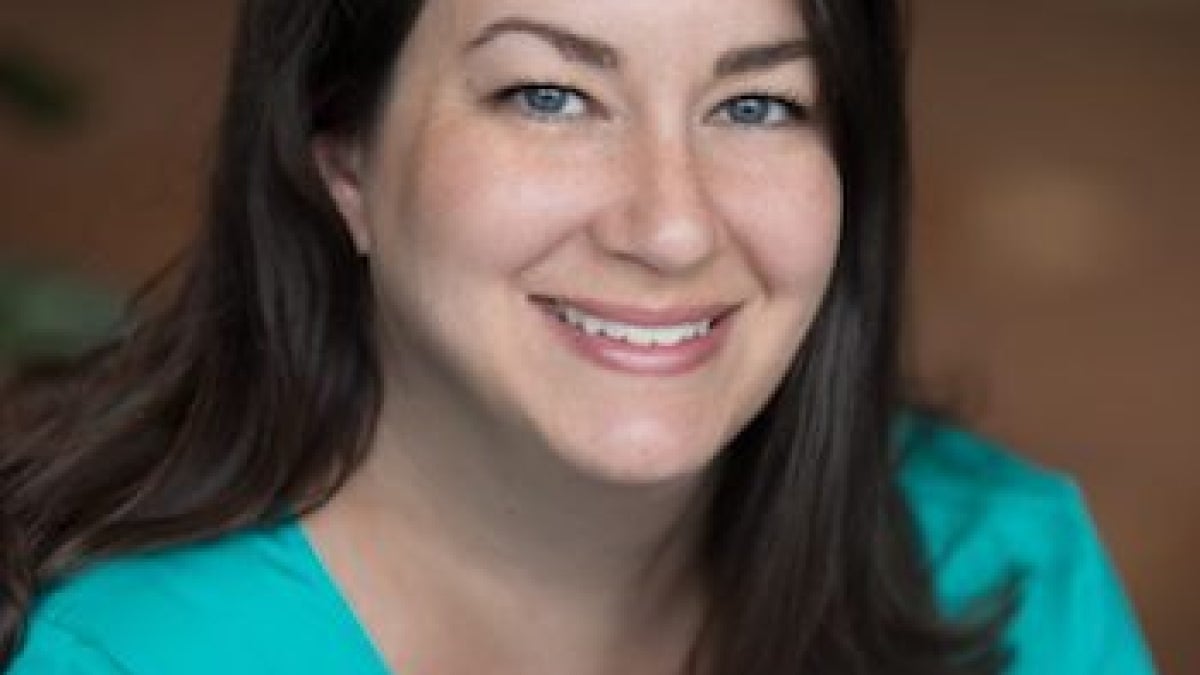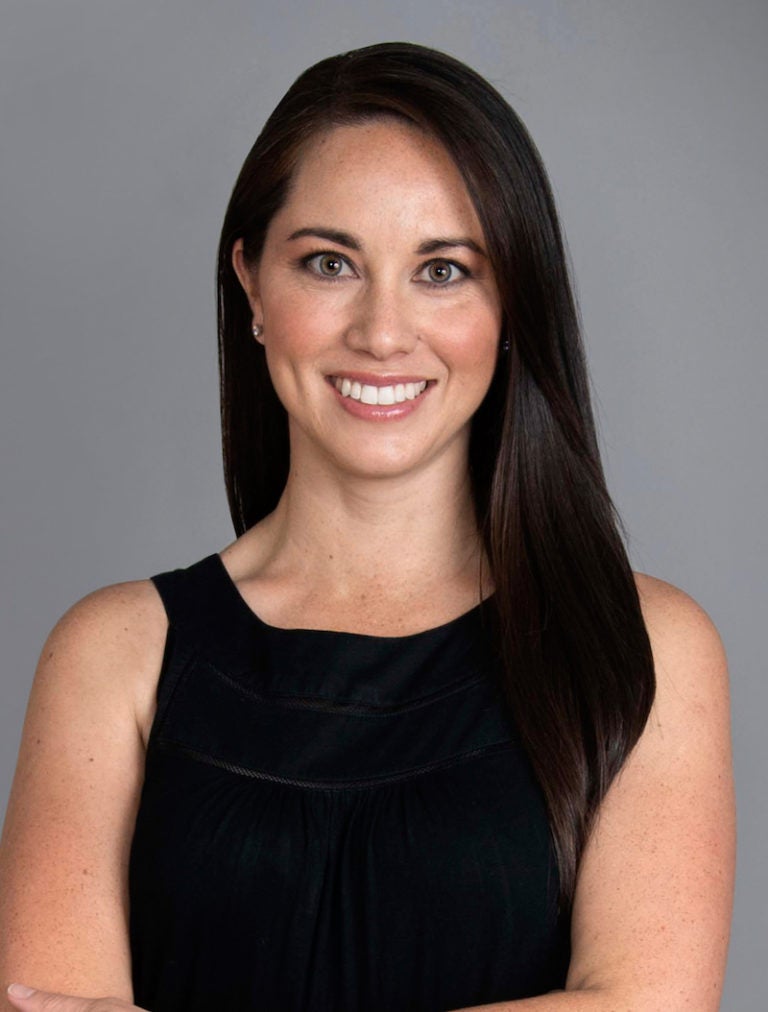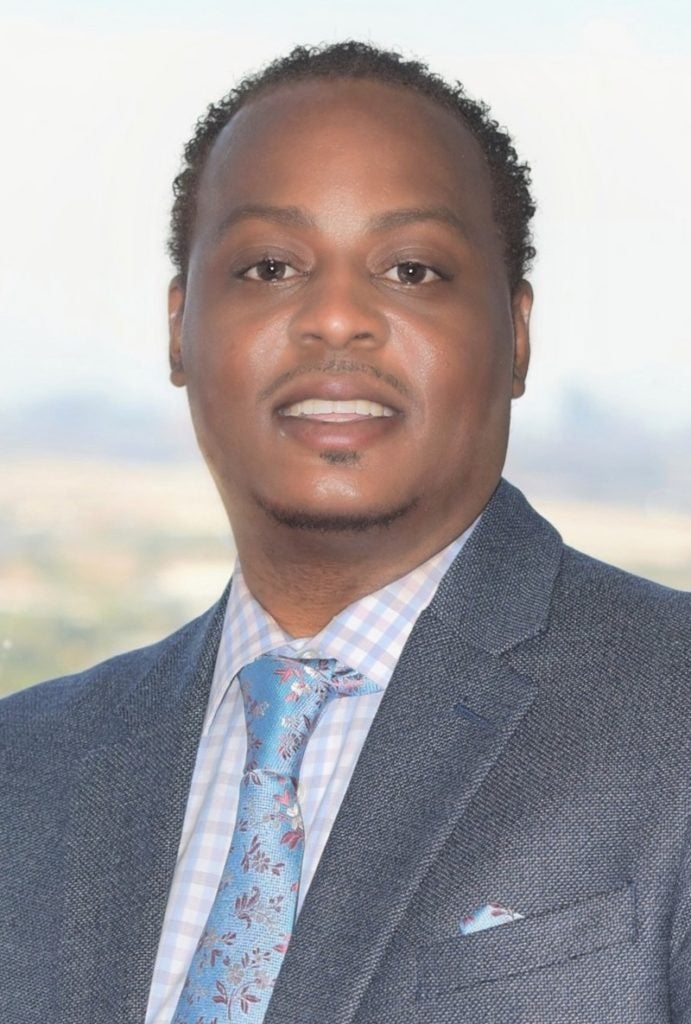Business success, community involvement, leadership in their professions and impact in their industries define the achievements of the exceptional individuals selected as the Phoenix Business Journal’s annual 40 Under 40 honorees.
This year, 10% of the 40 honorees pursued undergraduate or graduate studies in Arizona State University’s Ira A. Fulton Schools of Engineering. Heather Boysel (biomedical engineering ’04), Julie Garcia (construction management ’04), Yung Koprowski (civil engineering ’08) and Eric Luster (computer science) are among the best and brightest leaders making an impact in the Valley of the Sun.
Each of them say their career ascent has been built in large part on values and aspirations instilled in them through their educational experiences at ASU.
Heather Boysel
Engineering is fundamentally a rigorously systematic approach to solving problems — all about “utilizing logic and analytical skills to determine various solutions and then selecting the best option,” Heather Boysel said.
That definition builds a strong case for why Boysel followed up earning a degree in biomedical engineering in the Fulton Schools in 2004 by later graduating in the top 10% of her class in ASU’s Sandra Day O’Connor College of Law.
“The process to answer legal questions really mirrors the process to answer engineering questions,” she said. “What is the issue that needs resolved? What are the rules that govern the situation? What result do you get under that rule when you apply the facts at hand?”
The benefits of being well-versed in two fields that employ a similar problem-solving method has worked well for her.
Boysel recently became the first female managing partner at Gammage & Burnham, one of Arizona’s leading law firms, at a younger age than most in the elite group of female managing partners.
While taking on the management responsibilities of the position, she will maintain her law practice: commercial litigation with a primary focus on health care legal issues.
That focus harkens back to her choice of an undergraduate major.
“I am passionate about health care. It’s the reason I majored in biomedical engineering and why today the majority of my practice is health care law,” Boysel said.
She is on the board of directors for Adelante Healthcare, which operates multiple community health centers throughout Arizona — centers, she notes, “that help serve our most vulnerable populations.”
She has also served as co-chair of Gammage & Burnham’s recruiting committee. The position “gives me an excellent excuse to go back to ASU a couple times a year to do on-campus interviews with law students,” she said.
Boysel stays connected to ASU through many close friends who are her fellow alumni members of the university’s chapter of Alpha Delta Pi, a sorority that promotes leadership and social responsibility.
Julie Garcia
Julie Garcia
Julie Garcia says her college education prepared her well for her chosen career in construction. But her range of experiences at ASU did more than qualify her for a job. They amounted to “the journey of figuring out who I am and what I am passionate about.”
Along with what she learned in earning a construction management degree in the Fulton Schools’ Del E. Webb School of Construction in 2004, Garcia also took training in public speaking and studied social psychology.
She spent a summer studying in Italy, interned for a semester in the Arizona State Legislature and for four years sang in the ASU women’s a capella group, the Pitchforks. The latter taught her how to “seek harmony, in music and in relationships.”
Those studies and activities provided skills enabling her to relate to and communicate with people of many different stripes — which has proved valuable in her professional pursuits and community-building endeavors.
At work with one of Arizona’s leading construction companies, Garcia is director of preconstruction with Kitchell Contractors, leading teams on major building projects such as a $500-million-plus campus for the Maricopa Integrated Health System Care Reimagined program.
She has also been involved in construction work for St. Joseph’s Medical Center Barrow Neurological Institute, Phoenix Children’s Hospital, Banner Health and the recently completed University of Arizona Health Sciences Innovation Building project.
Outside of her job, Garcia and her husband, Neil, are raising “four fantastic kids.” She also recently joined the local board of the Juvenile Diabetes Research Foundation, and she is giving back to ASU as an adjunct faculty associate with the Del E. Webb School of Construction. Garcia has taught Construction Management 101 for the past two semesters.
“I love it,” she says. “I hope to inspire my students to fall in love with the industry as much as I did.”
Yung Kropowski
Yung Koprowski
Yung Koprowski’s education at ASU began several years before she took her first college courses. Participating in the university’s summer programs for youngsters when she was in the seventh and eighth grades sparked an interest in math and science and introduced her to the Women in Science and Engineering organization.
Those experiences led to a decision to study engineering in college.
Koprowski came to ASU with a scholarship requiring she perform community service, so she volunteered to work with the ASU chapter of Habitat for Humanity, the nonprofit that helps communities develop affordable housing.
That work became the catalyst for Koprowski’s career aspirations. She switched to a civil engineering major with a concentration in construction. She went on to focus on transportation engineering, earning her degree in 2008.
“I had a great experience at ASU,” she said. “The emphasis on innovation and the resources and opportunities available to students are really neat,” she says. “I also appreciated that many faculty members were in industry and brought a lot of real-world experience into the classroom.”
Today, Koprowski is the founder and principal of Y2K Engineering, based in Mesa, Arizona. The company, started in early 2017, has worked on transportation engineering projects with the city of Phoenix and almost a dozen other municipalities in the metropolitan area, as well as state and county transportation agencies.
Her expertise ranges from traffic engineering and transportation planning, specializing in safety, intelligent transportation systems, traffic operations optimization and “complete streets” designed for multiple means of transport.
Koprowski previously served as president of the Intelligent Transportation Society of Arizona and the Phoenix Sonoran section of the American Society of Highway Engineers. She was also recognized in 2016 as one of the “New Faces of Civil Engineering” by the American Society of Civil Engineers.
She and her husband, Keith, also a 2008 Fulton Schools graduate in civil engineering, volunteer to judge senior-year engineering design projects at ASU and talk to students about career aspirations.
Koprowski also mentors girls and young women involved in STEM education programs and has helped start a STEM makerspace program in a local elementary school.
Eric Luster
Eric Luster
As founder and CEO of Movement Interactive, Eric Luster is striving to pioneer “person-centered design” of innovative health care technologies.
As president and chairman of Waymark Gardens, a senior-living community in Glendale, Arizona, Luster is leading the development of new and existing facilities designed to use smart technologies to improve the quality of life for residents.
His success has led to a seat on the Community Advisory Board for the Center of Innovation in Healthy and Resilient Aging at Arizona State University, which focuses on advancing technologies that fight disease and provide health care solutions for seniors.
A former senior systems engineer and researcher for several U.S. Department of Defense programs, Luster, a U.S. Army veteran, is also the inventor of the HIJI BAND sensor. The wearable technology, which is still being fine-tuned, gives athletes and others real-time alerts about possible concussion-strength impacts.
Luster’s accomplishments so far have earned him recognition as the Veterans Entrepreneurship Programs’ Entrepreneur of the Year in 2014, as one of the Top 35 Entrepreneurs Under 35 in Arizona from the Arizona Republic in 2015 and recently as one the Top 50 Technology Visionaries by InterCon.
The skills driving his endeavors were honed during his graduate studies in computer science in the Fulton Schools from 2009 to 2014.
“I learned how to conduct research. I learned how to innovate, and I learned how to be resilient” in the face of challenges and roadblocks, Luster said.
At ASU, he earned a fellowship in the National Science Foundation’s leading program for science and engineering doctoral students, the Integrative Graduate Education and Research Traineeship, called IGERT.
As part of that training, Luster did research in the Fulton Schools Center for Cognitive Ubiquitous Computing, known as CUbiC, which develops computing technologies to aid people with physical challenges.
That work “established a strong foundation for everything I’m doing,” Luster said.
Luster is now circling back to ASU. He was recently named an adjunct faculty member of the university’s Edson College of Nursing and Health Innovation, where he will teach and conduct innovative research.
More Science and technology

ASU forges strategic partnership to solve the mystery of planet formation
Astronomers have long grappled with the question, “How do planets form?” A new collaboration among Arizona State University,…

AI for AZ: ABOR funds new tools for state emergency response
A huge wildfire rages in the wilderness of Arizona’s White Mountains. The blaze scorches asphalt and damages area bridges,…

ASU researchers engineer product that minimizes pavement damage in extreme weather
Arizona State University researchers have developed a product that prevents asphalt from softening in extreme heat and becoming…



